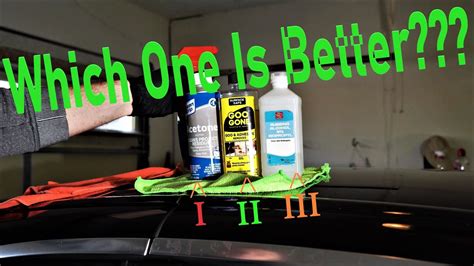The Easiest Way to Remove Glue From Your Car
Removing stubborn glue from your car can be a frustrating experience, but it doesn't have to be. This comprehensive guide explores the easiest and most effective methods for tackling various types of glue, from leftover stickers to super glue mishaps. We'll cover everything from simple household items to specialized cleaning agents, ensuring you get your car looking pristine again.
What Kind of Glue Are You Dealing With?
Before jumping into removal techniques, it's crucial to identify the type of glue you're dealing with. Different glues require different approaches. Common culprits include:
- Sticker residue: This is often the easiest to remove, typically requiring just a bit of elbow grease and the right cleaning solution.
- Super glue (cyanoacrylate): This powerful adhesive requires more specialized techniques due to its strong bond.
- Hot glue: This type of glue is typically easier to remove once it has cooled, but requires careful handling to avoid burns.
- Construction adhesive: This heavy-duty glue is notoriously difficult to remove and often requires professional help for extensive residue.
Knowing the glue type helps you choose the most effective removal method, saving you time and effort.
How to Remove Common Glue Types
Here's a breakdown of how to tackle some of the most frequent glue-related problems on your car:
1. Removing Sticker Residue
This is usually the simplest task. Here's a step-by-step guide:
- Preparation: Start by gently washing the area with soap and water to remove any loose debris.
- Application: Apply a generous amount of isopropyl alcohol (rubbing alcohol) to a microfiber cloth. Avoid harsh chemicals that could damage your car's paint.
- Scrubbing: Gently rub the affected area using circular motions. For stubborn residue, let the alcohol sit for a few minutes before scrubbing again.
- Rinse: Thoroughly rinse the area with clean water and dry it with a clean microfiber cloth.
2. Removing Super Glue
Super glue is notoriously tricky. Here's a safe and effective approach:
- Acetone (Nail Polish Remover): Apply a small amount of pure acetone (make sure it's acetone-based, not just nail polish remover with added oils) to a cotton swab or microfiber cloth. Test it on an inconspicuous area first to ensure it doesn't damage your paint.
- Gentle Application: Dab the acetone onto the super glue, avoiding harsh rubbing. The glue should begin to dissolve.
- Patience: This process requires patience. Allow the acetone to work its magic, reapplying as needed.
- Removal: Once the glue is softened, gently scrape it away with a plastic scraper or a dull knife. Be careful not to scratch the car's surface.
- Clean Up: Thoroughly clean the area with soap and water, followed by a thorough drying.
3. Removing Hot Glue
Hot glue, when cooled, can often be removed relatively easily:
- Cooling: Allow the hot glue to cool completely before attempting removal.
- Gentle Peeling: Try gently peeling the cooled glue away from the surface. If it doesn't come off easily, proceed to the next step.
- Heat: Apply a hair dryer on a low setting to gently warm the glue, making it more pliable and easier to remove.
- Scraping: Use a plastic scraper or a dull knife to carefully remove any remaining glue. Be gentle to avoid scratching.
- Clean Up: Clean the area with soap and water, followed by drying.
4. Removing Construction Adhesive
Construction adhesive is the toughest to remove and often requires professional help for larger areas. For small spots, you can try the following:
- Mineral Spirits: Apply mineral spirits to a clean cloth and gently rub the affected area. This will soften the adhesive.
- Scraping: Carefully scrape away the softened adhesive with a plastic scraper or a dull knife.
- Repeat: Repeat the process as needed until the adhesive is removed.
- Clean Up: Clean the area with soap and water and dry thoroughly.
What About Other Cleaning Agents?
While isopropyl alcohol and acetone are effective for many glues, other solvents exist. Always test any solvent on an inconspicuous area before applying it to the affected area. This precaution prevents accidental damage to your car's paint.
Preventing Future Glue Problems
Prevention is always better than cure. Here are some tips to prevent glue messes on your car in the future:
- Careful application: When applying stickers or using any adhesive, be precise and avoid getting glue where it doesn't belong.
- Protective coverings: Use protective coverings when working near your car's paint, such as masking tape or plastic sheeting.
- Cleaning up spills immediately: Act quickly to remove any glue spills to prevent them from setting.
Conclusion
Removing glue from your car can be tackled effectively with the right approach. Remember to identify the glue type and choose the appropriate method, always testing on an inconspicuous area first. With patience and the right tools, you can restore your car's pristine appearance. Remember to consult a professional detailer for extensive or stubborn glue residue.

